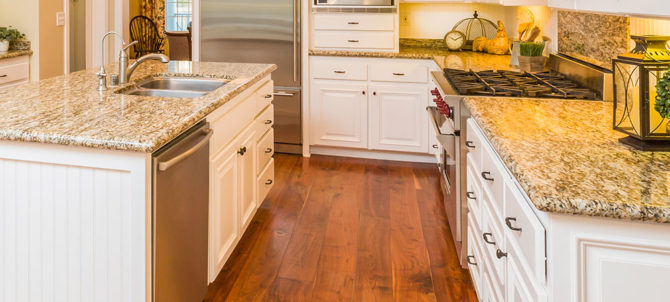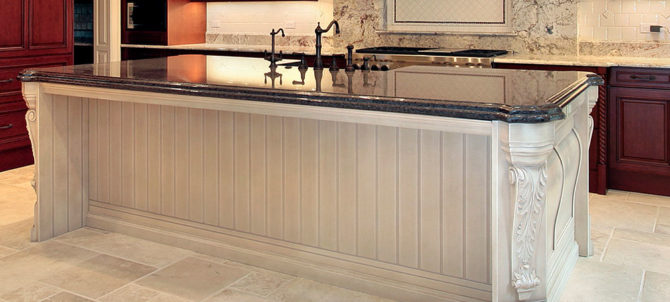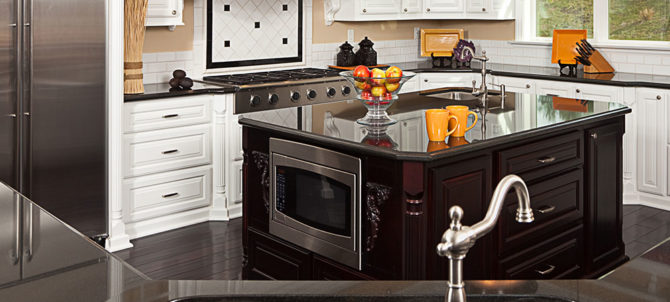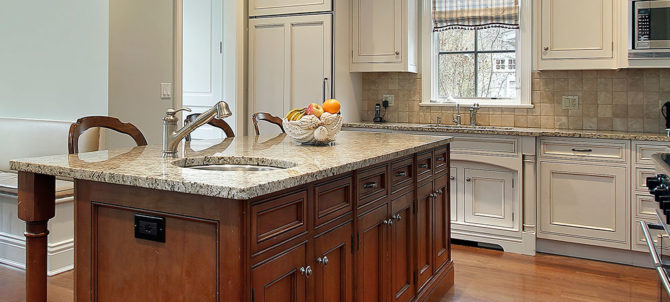
Since the late 1980s, granite has been one of the world’s most popular countertop materials. Natural stones grew in popularity as costs fell and began to be quarried worldwide. Previously, granite was a stone that only wealthy homeowners could buy. Thankfully, granite countertops can now be found in countless kitchens and bathrooms worldwide.
What makes granite so popular?
Granite has various properties, making it the preferred stone in the construction industry. Granite excels all other materials in aesthetics, strength, and durability, providing unrivaled value to residential and commercial users worldwide.
Appearance
Granite comes in a variety of visual features, including spectacular grains, gorgeous veins, and color patches. This property is unique to granite, and no other construction stone offers such a wide range of aesthetic possibilities.
Durability
Granite’s durability is another factor contributing to its popularity. Granite is one of the most potent natural stones. Granite is a good countertop material due to its durability and ability to withstand kitchen demands.
Maintenance
Finally, granite countertops’ popularity stems from the ease with which they can be maintained. Although you must maintain the counters, they require significantly less maintenance than other countertop options.
You only need warm, soapy water and a mop for daily cleaning. Even though you must reseal the surface, you only need to do it once a year. Sealing requirements vary per granite type; however, the stone does not need to be resealed as regularly as many other natural stones.
While granite is a popular stone countertop material, faux granite is another option worth considering. While there is nothing wrong with faux granite, many companies try to sell faux granite countertops as real granite, and this is wrong as it can result in you getting scammed. To avoid getting duped, you should keep your eyes out for the faux granite and be able to tell the difference.
What does “fake granite” mean?
The term “fake granite” refers to countertops that try to replicate the elegance of actual stone. Various countertop materials may be made to seem like granite, including engineered stone, laminate, and painted counters.
The good thing is that if you are keen, you can tell whether the granite you want is real or faux. Some of the things you need to look out for include:
Cost
In general, granite will cost a couple of tens of dollars per square foot. You should be wary if you come across a stone that claims to be granite at a much lower price. If the stone is less expensive than what is available in the market, you are most certainly dealing with faux granite, and if this isn’t what you are looking for, you should stay away from it. If the “granite” is inexpensive and not a forgery, it is almost certainly of inferior quality.
Pay attention to the appearance of the granite.
This could be the most challenging part. Because faux granite countertops are designed to seem like granite, you may not notice the difference at first glance. However, several characteristics of the appearance indicate that the granite is artificial.
If you see that the slab has the same pattern throughout, you are not looking at genuine granite. Granite is a natural stone; thus, there will always be some faults. Furthermore, each slab of granite is distinct due to its natural origin. Even slabs from the same quarry will have variances.
Test for porosity
Testing the porosity of the granite is a simple approach to determine whether it is genuine. Natural granite is porous and will absorb spilled water (unless freshly sealed). However, faux granite would not be permeable. Apply a modest amount of water to a small area of stone. If the water absorbs within a few minutes, you have actual granite that has not been sealed.
However, if the water does not absorb, the granite is likely a fake. This granite will only be genuine if it has already been sealed, which is unlikely given that you must often seal it yourself. In any case, you ought to be suspicious.
Tap the surface
If you lightly tap the rear of the surface with a small hammer, authentic granite should make a ringing noise. Fake granite, on the other hand, produces a slight click sound. If the stone makes the latter of the two sounds, you know it’s not natural stone.
Check the seams
Natural granite countertops will have seams anywhere on their surface. Once you’ve located the seam, examine it closely. If the pattern on the other side of the seam is somewhat different, it is most likely genuine granite. However, if the pattern is identical, you have faux granite. Finally, the surface is most likely faux granite if there is no seam.
Tricks to reduce the chances of buying the wrong stone
To get the ideal results, you must buy the right stone. To increase the chances of buying the right stone, you need to ensure that you are buying the stone from the right store. Before committing to making the purchase, you should do plenty of research beforehand and confirm that the store you are looking to buy the stone from is reputable and has a proven record.
Another thing you should do is to avoid looking for the cheapest deal in the market. As much as you shouldn’t spend all your money on a countertop, you shouldn’t try to buy the countertop stone at an extremely low price. This is because, you are most likely to attract scammers who might try to sell you substandard or fake stones for an ultra-low price.
The right thing to do is to research and find an average amount you should expect to pay for your stone.
Parting shot
Investing in genuine granite countertops for your home is never a waste of effort or money. However, it is critical to shop carefully to avoid purchasing faux granite countertops Ralegh if you don’t want them.
You can reliably identify natural granite countertops by following the abovementioned guidelines and making a wise investment in your house.


